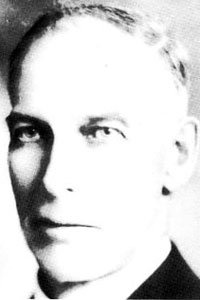John Roger Nesbitt, the son of James and Eliza Nesbitt, was born in Walkerton, Ontario. His parents had migrated from Ireland in the 1850s, and had settled on a homestead in Brant Township, Bruce County, Ontario.
From his first days as a student at a dairy school in Belleville, John was interested in the industry. He came west in 1896, and worked on a farm in the Pilot Mound area for a short while. Then, he moved to Shoal Lake, and started to work at Mr. B. Scott’s creamery. The association with this creamery lasted for the rest of his life.
The Shoal Lake Creamery of the 1890s was one of the first in the province, and thus it pioneered the development of the dairy industry in Manitoba. After taking a short course in dairying in Winnipeg, John taught a milk testing course during the inactive winter months in the same school. Mr. Nesbitt’s knowledge came to be admired by many. His creamery not only produced a butter that withstood the competition of Dominion wide tests, but it also enjoyed a quality and flavour that was recognized beyond the Canadian borders, in places like Australia, New Zealand, and Denmark. His name became synonymous with quality. For this reason, he was chosen to act on a commission to draw up the rules and regulations for grading cream. Many of these same rules are used today.
In 1899 he packed butter in hermetically sealed containers and shipped them to the Yukon. This was a practice that marked the forerunner of the pasteurization process in Canada.
For 12 years he gave yeoman service to Manitoba and Canada through his efforts on the Manitoba Dairy Association and the Dairy Manufacturing Association Boards.
John was interested in many things besides dairies. On his farm he showed the neighbours the value of raising bacon hogs of superior quality and type. He saw the need for improvement in the cattle raised for the dairy industry so in partnership with J. Martin, they imported a herd of Holstein cows from P.E.I. In later years the dairy herds found throughout the province were often progeny of that excellent herd. He served as a village councillor for many years. From 1929-1946 he was the chairman of the hospital board. The hospital was able to last through the “poor” years because of the important role he played in its operation. He loved flowers and trees, and many of the flower beds and rows of spruce trees were planted by him. He showed his interest in wild geese, by caring for and protecting a flock in Shoal Lake.
The dairy industry, farming operations, and the community have all benefited from this man’s contributions.


